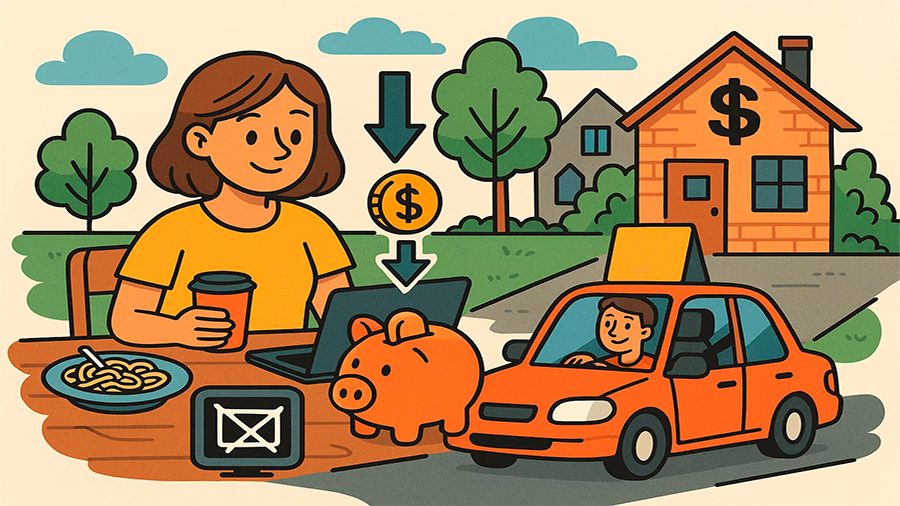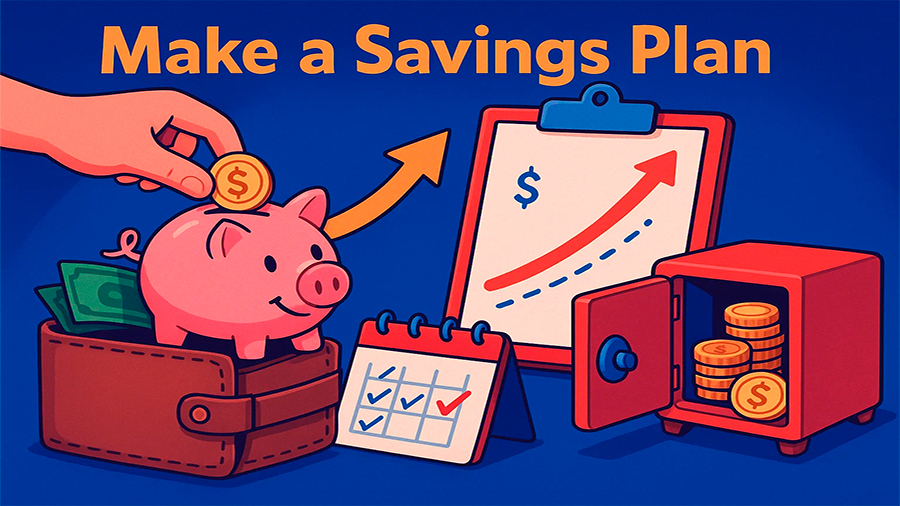How to Prepare for a Big Purchase Without Credit
In a world where loans and credit cards are pushed as the default solution, the idea of buying something significant without borrowing can feel almost unusual — maybe even a bit rebellious. But for many people, skipping credit isn’t just about avoiding debt. It’s about peace of mind, financial independence, and the quiet confidence of knowing that nobody has a claim on your new purchase. When you’ve saved the money yourself, there’s no lingering monthly bill, no creeping interest charges, and no dependence on a bank’s approval. Whether you’re aiming for a car, a home renovation, or the trip of a lifetime, building the funds yourself changes the entire experience. It’s slower, yes, but also calmer, more deliberate, and comes without the weight of years-long repayments hanging over your head.
Step One: Know Your Target
Defining the Purchase
The first step is knowing exactly what you want and what it will cost. “A car” or “a vacation” is too vague — it’s like saying you want “some food” without knowing the recipe. Narrow it down: which model, what destination, what level of quality. The difference between a $12,000 compact car and a $28,000 SUV is huge in planning terms. Being specific helps you plan with real numbers instead of guesses, and it stops you from gradually drifting into overspending because you kept “upgrading” your idea along the way.
Research the True Cost
Don’t just look at the sticker price. Consider taxes, insurance, maintenance, accessories, and any hidden fees. A $20,000 car might actually mean $22,000 once everything is included. A “cheap” vacation can balloon with baggage fees, excursions, and currency exchange rates. The more realistic your estimate, the fewer unpleasant surprises you’ll face when it’s time to pay. If possible, talk to people who have recently made the same purchase — they can warn you about costs you might never have thought about, such as delivery fees, installation charges, or required upgrades. Think of it as building a financial map before you set off.
| Purchase | Base Price | Extra Costs | Total Estimated Cost |
|---|---|---|---|
| Used Sedan | $18,000 | $1,500 (tax, registration) | $19,500 |
| Kitchen Remodel | $10,000 | $2,000 (permits, finishing) | $12,000 |
| Two-Week Vacation | $4,500 | $1,000 (meals, activities) | $5,500 |
Step Two: Make a Savings Plan
Reverse-Engineer the Goal
Once you know the total cost, work backward. If you want to make the purchase in a year and it will cost $12,000, you’ll need to set aside $1,000 each month. This simple math also makes it easier to adjust your plan — maybe extending the timeline to 15 months if $1,000 a month is too much, or aiming for 10 months if you can push harder. This reverse calculation keeps you grounded and helps you spot early whether your timeline is realistic. It also gives you a clear benchmark each month, which can be more motivating than a vague idea of “saving when you can.”
Set Up a Dedicated Account
It’s easy to dip into general savings for “urgent” things that pop up. A dedicated account — separate from everyday funds — helps you stay disciplined. Even better if it’s slightly inconvenient to access, so spending the money impulsively is harder. Some people like to nickname their account (“Dream Trip” or “New Wheels”) so every time they see it, they get a little motivational boost. Consider using an account that offers a small interest rate or cash rewards — even a few extra dollars earned passively can help.
| Target Purchase | Total Cost | Timeframe | Monthly Savings Needed |
|---|---|---|---|
| Home Office Setup | $5,000 | 10 months | $500 |
| Motorcycle | $8,400 | 14 months | $600 |
| Luxury Watch | $3,600 | 12 months | $300 |
Step Three: Trim and Redirect
Finding Room in Your Budget
You don’t have to live on instant noodles to save. Small, consistent changes add up — downgrading a streaming plan, making coffee at home, cutting unused subscriptions, or carpooling to work twice a week. The key is to immediately redirect the “saved” amount to your goal. If you skip a $30 dinner out, move that $30 to your dedicated account the same day so it doesn’t vanish into other expenses. Over time, these redirected micro-savings can cover weeks or even months of your target purchase timeline.
Side Income Boost
If cutting expenses isn’t enough, explore short-term income boosts: weekend freelancing, selling unused items, or seasonal work. Even a few hundred extra dollars a month can bring your goal closer much faster. One friend of mine funded half of his new laptop by driving for a food delivery app for just two months in the evenings. Another sold a collection of old gaming consoles gathering dust — and made more in a week than he expected in three months of saving. Short sprints of extra work can make a surprising difference when you have a specific finish line in sight.
| Saving Strategy | Monthly Impact | Annual Impact |
|---|---|---|
| Canceling Unused Gym Membership | $40 | $480 |
| Cooking at Home Twice a Week Instead of Dining Out | $60 | $720 |
| Weekend Freelance Work | $200 | $2,400 |
| Renting Out Parking Space | $50 | $600 |
| Selling Unused Electronics | Varies | $300–$800 |
Step Four: Keep Motivation Alive
Visual Reminders
Saving can feel slow, especially when your goal is months or years away. Keep a photo of your target purchase somewhere visible — on your phone lock screen, your fridge, your desk. Every time you see it, you’re reminded why you’re making those small sacrifices. Some people even use progress trackers, coloring in a chart as they save, or using a savings app that shows them in real time how close they are to their target.
Track Your Progress
Break your savings target into smaller milestones. Each time you hit one, celebrate in a small, budget-friendly way — maybe a coffee with a friend, a home-cooked special dinner, or a short weekend outing. This keeps you engaged and helps the process feel rewarding instead of restrictive. If your motivation dips, revisit your original goal and imagine the day you finally make the purchase without touching a credit card. That mental picture is often the best antidote to a slow month of saving.
Conclusion
Preparing for a big purchase without relying on credit is less about deprivation and more about direction. You’re replacing monthly repayments and interest with a plan you fully control. By knowing the true cost, setting up a clear savings strategy, making small lifestyle tweaks, and keeping your motivation alive, you not only reach your goal — you get there without the weight of debt. And when the day comes to make that purchase, you’ll own it outright, free and clear, with the satisfaction that it’s truly yours from day one. The journey to saving might test your patience, but the payoff is worth every deliberate step. In a world where quick fixes and instant gratification dominate, choosing to plan, wait, and pay in full might just be one of the most empowering financial moves you can make.



